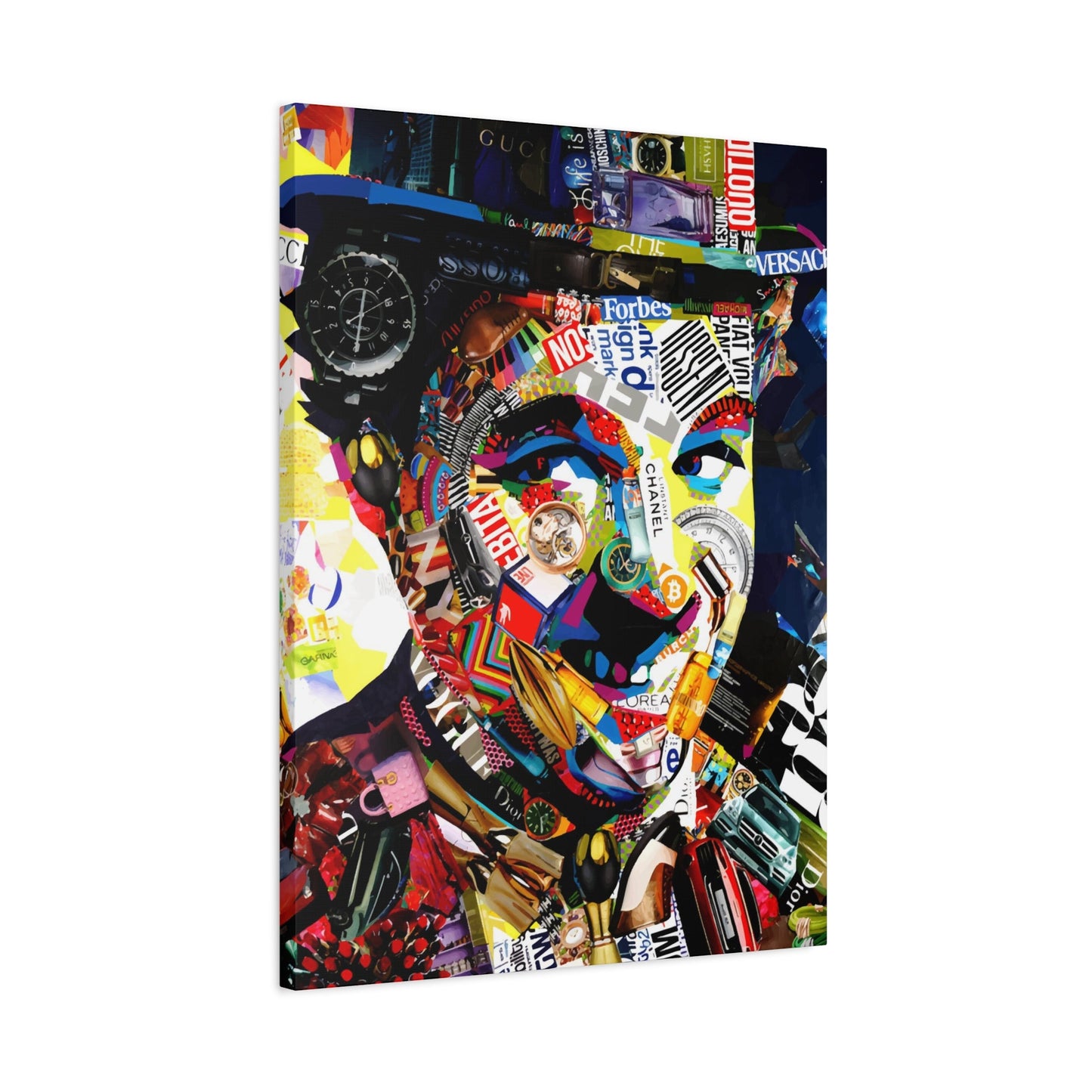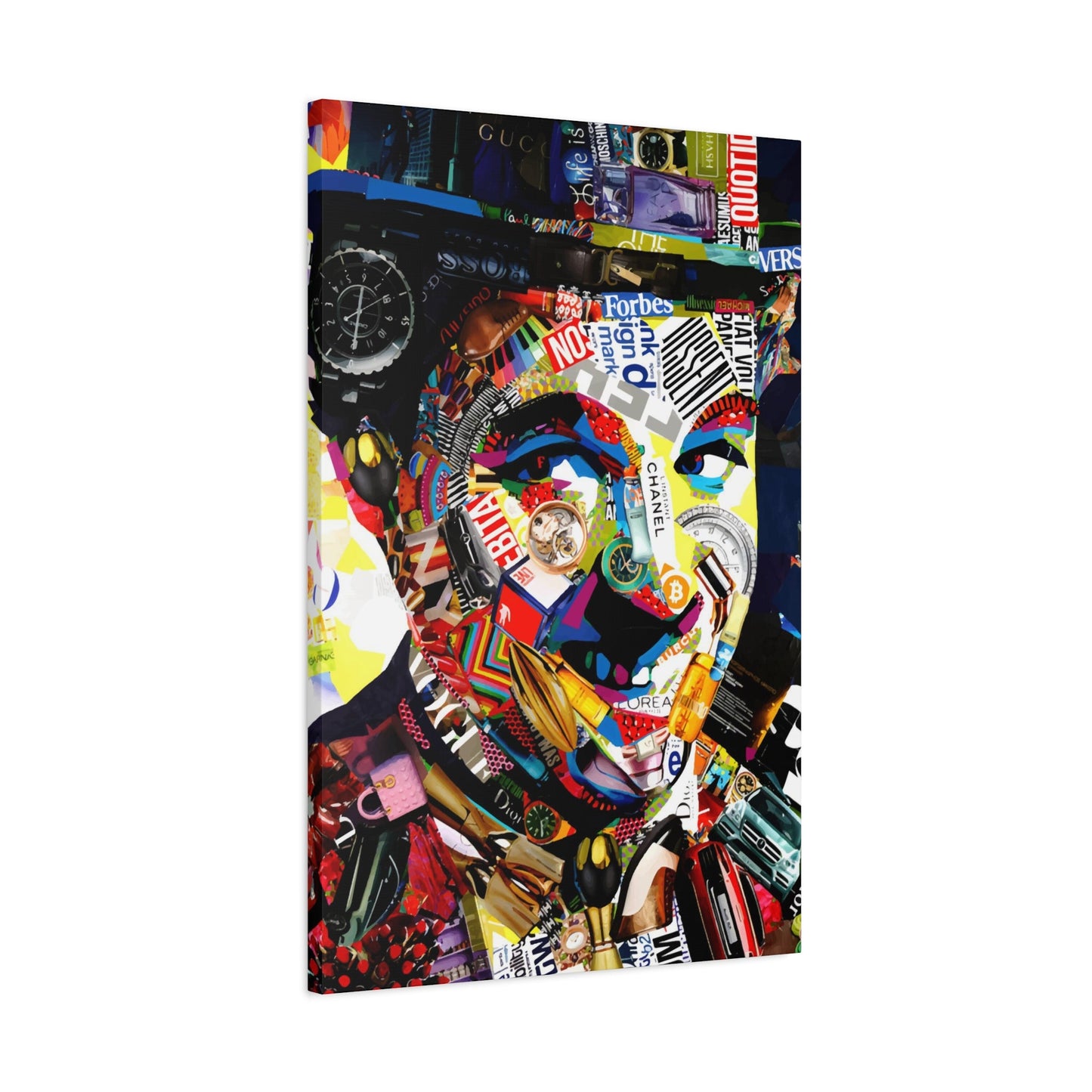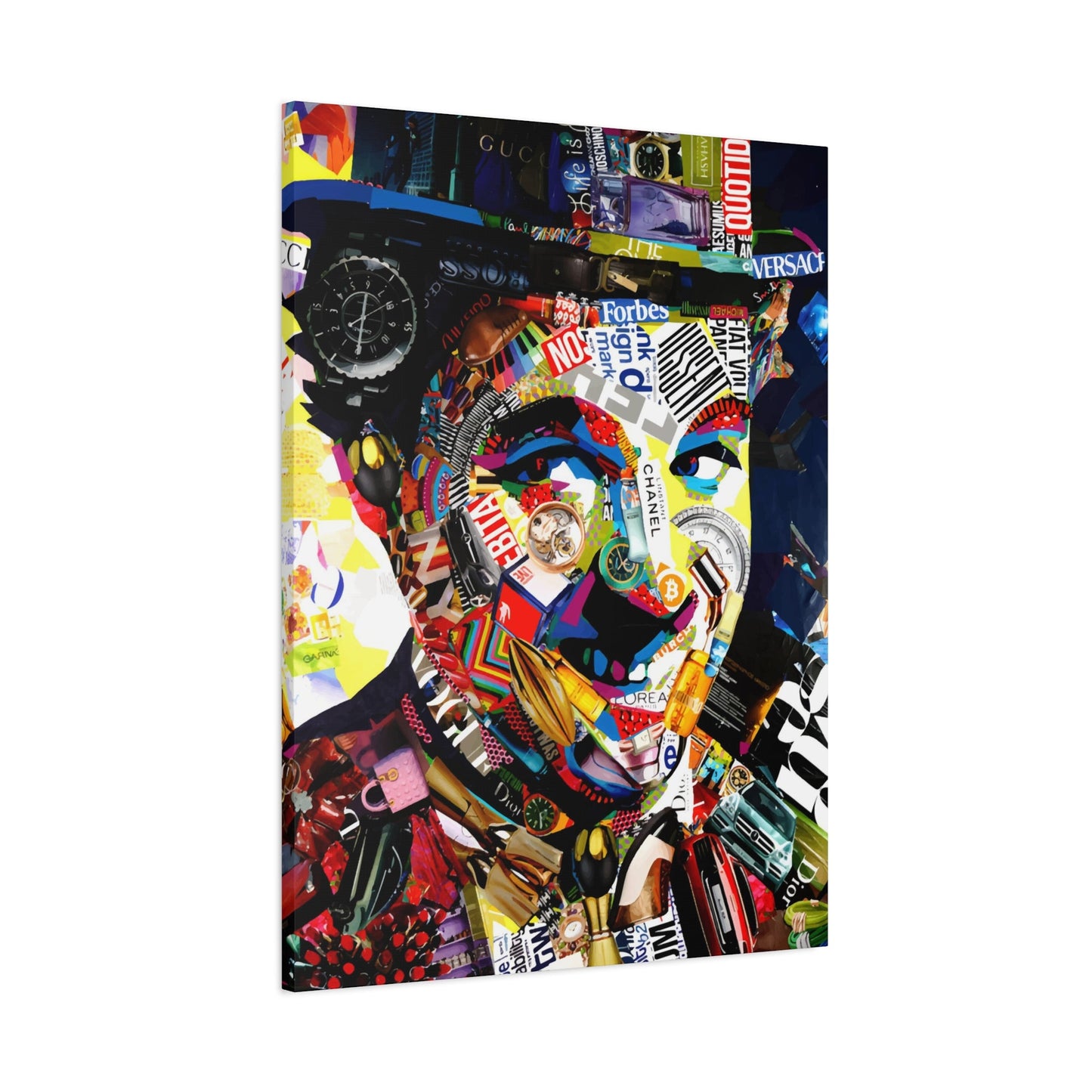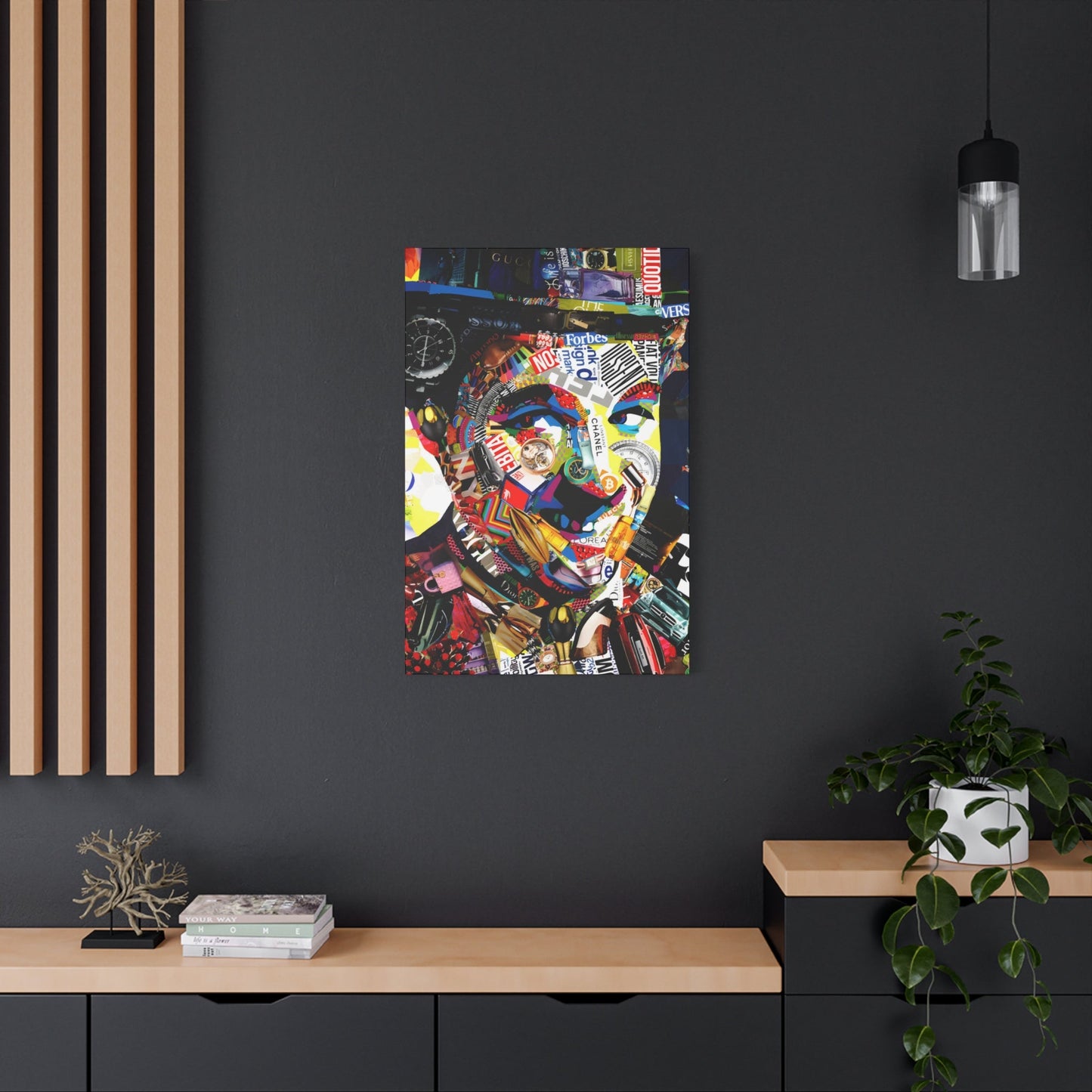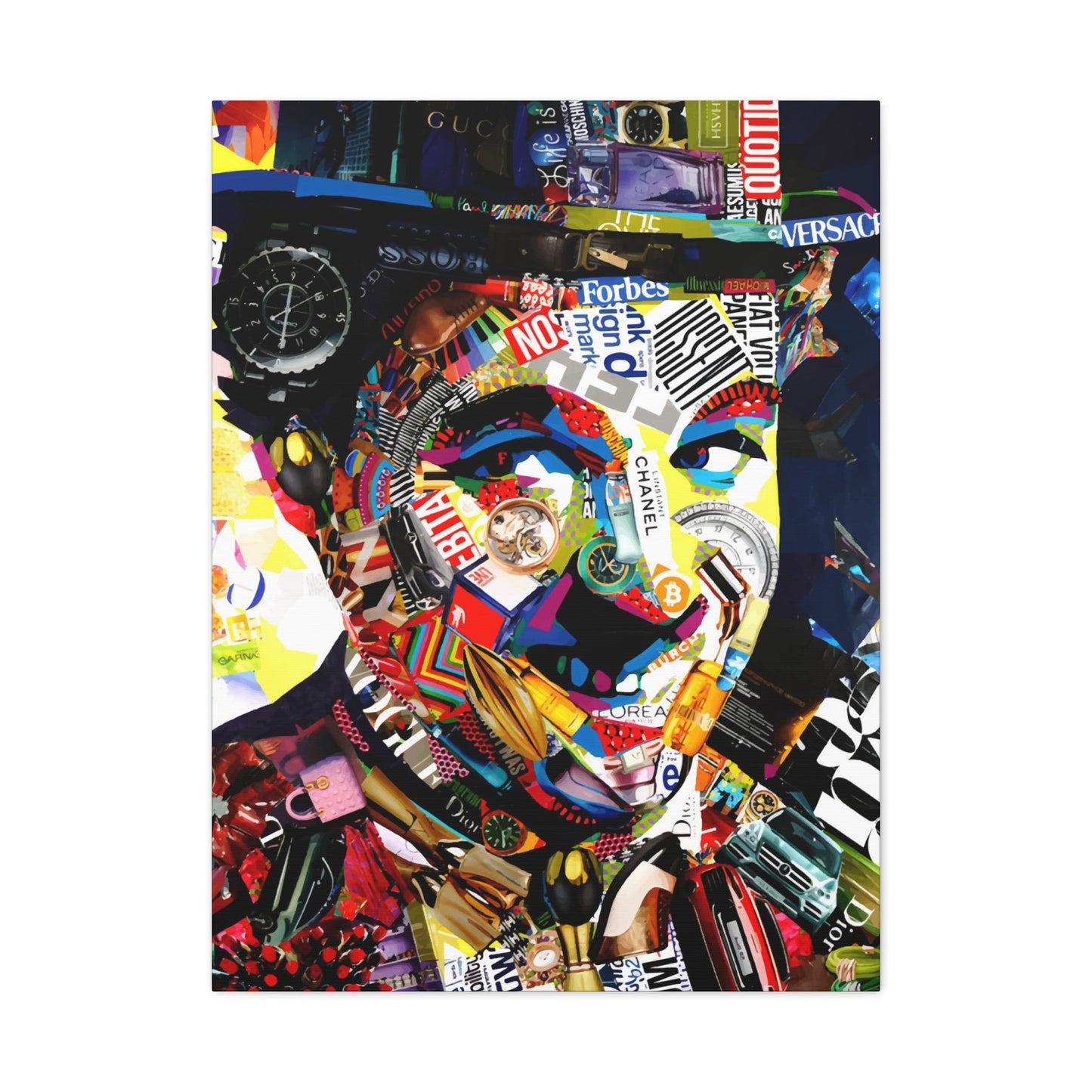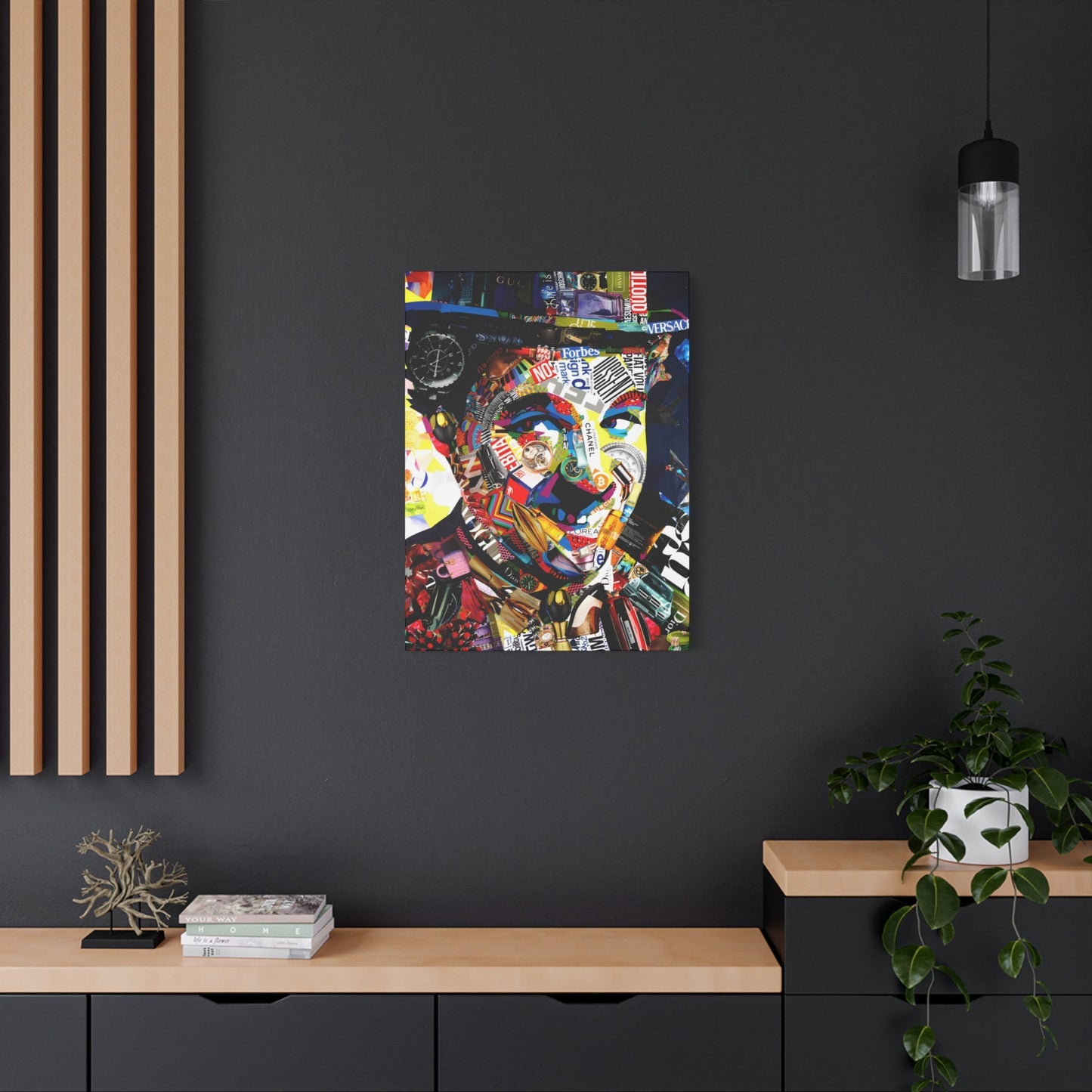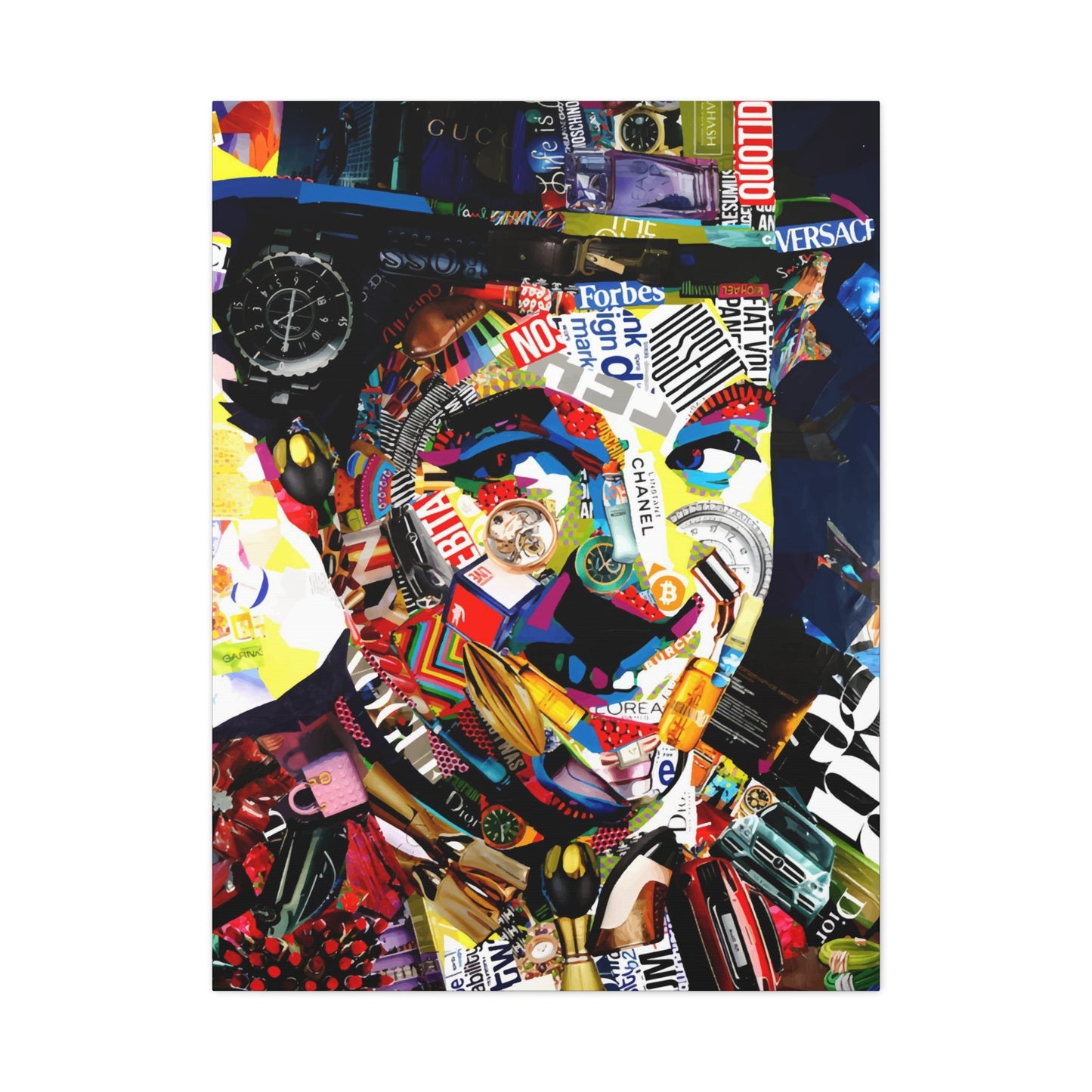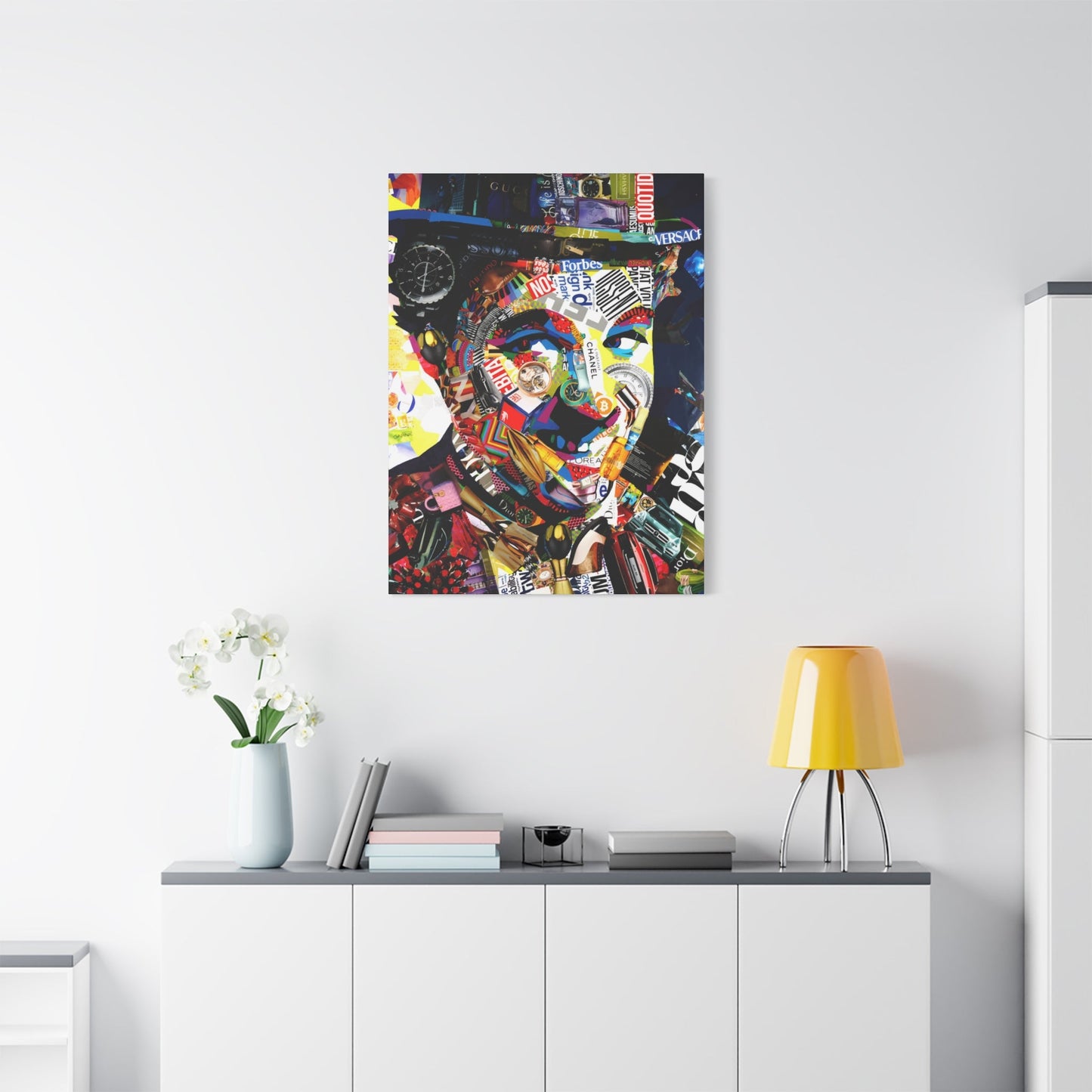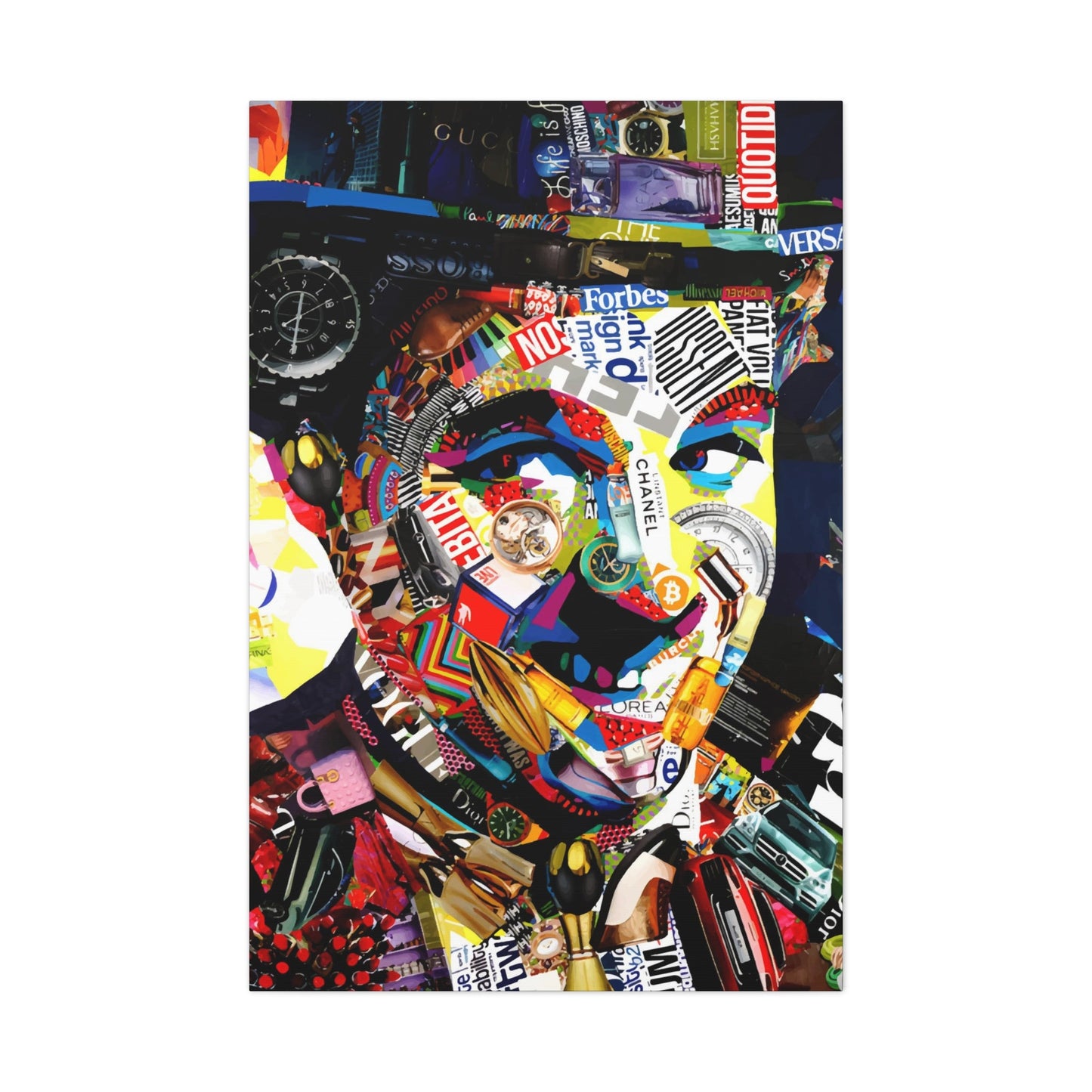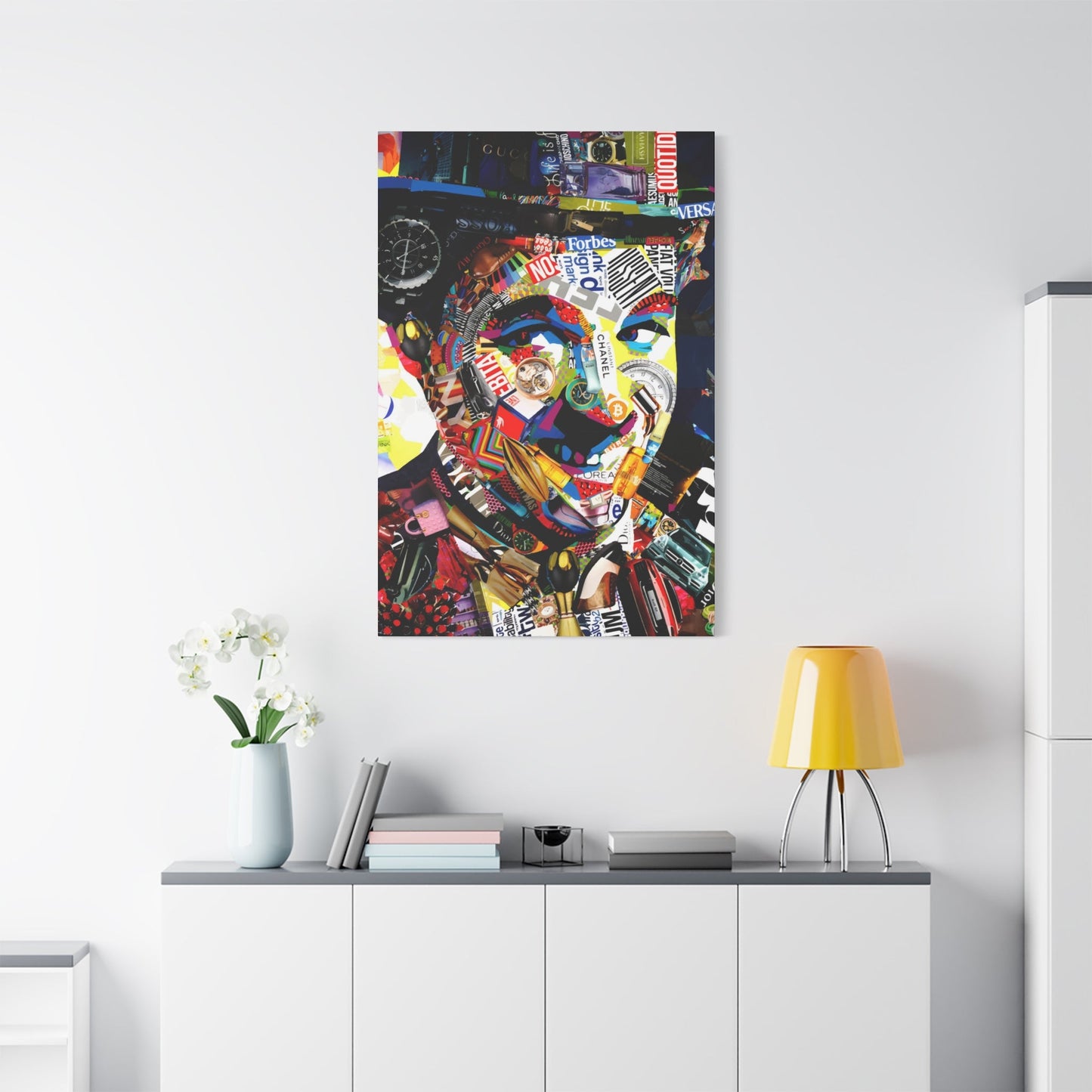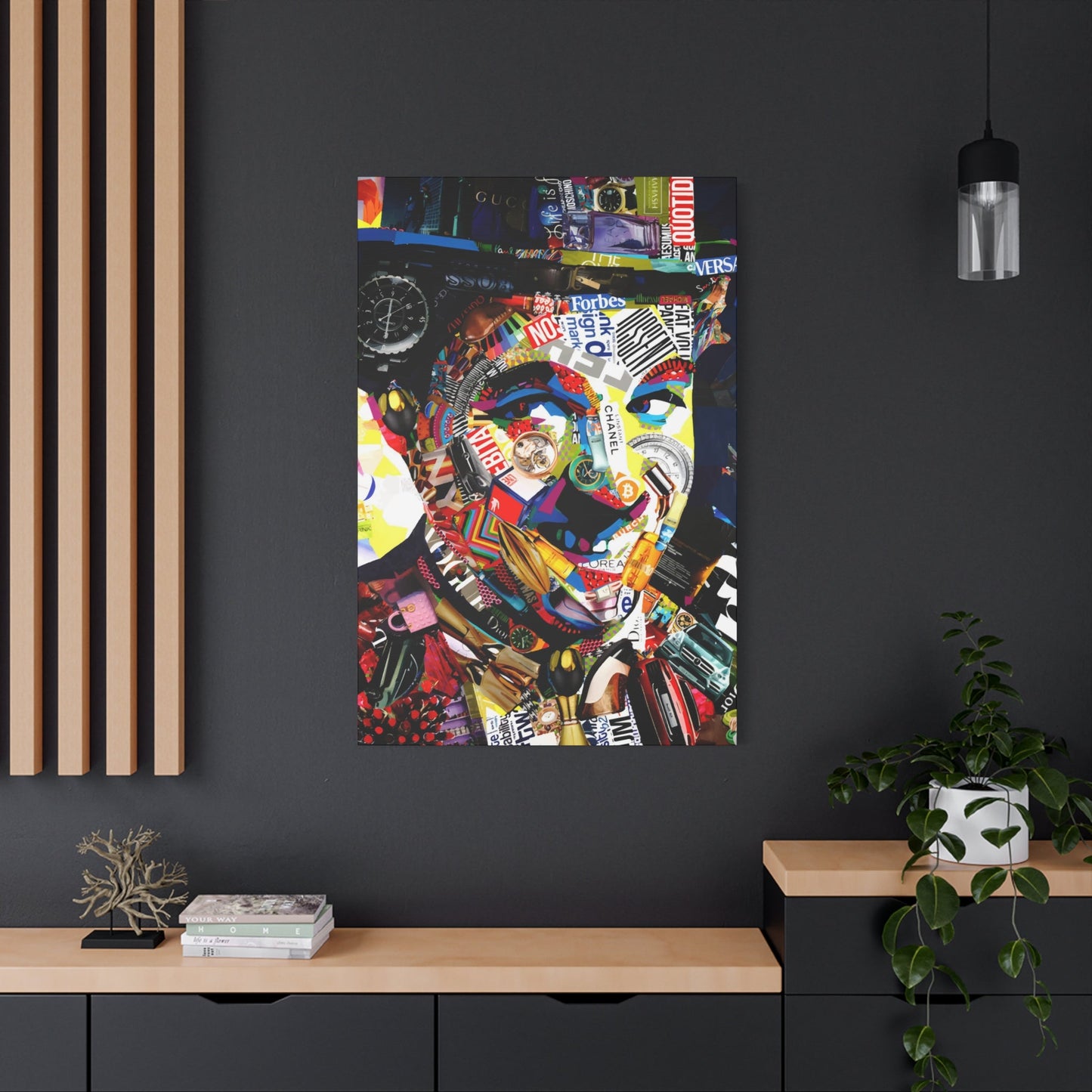Top Contemporary Artists Who Reimagine Charlie Chaplin in Wall Art
Charlie Chaplin's enduring influence extends far beyond the silver screen, manifesting beautifully in the world of visual art where his iconic image continues to captivate audiences across generations. Canvas artwork featuring the legendary performer represents more than mere decoration; it embodies the spirit of an era when cinema was discovering its voice through silent storytelling and physical comedy. Artists worldwide have found inspiration in Chaplin's distinctive silhouette, his expressive gestures, and the profound humanity he brought to every role, particularly his most famous creation, the Little Tramp.
The appeal of Chaplin canvas art lies in its ability to freeze moments of pure cinematic magic, transforming fleeting film frames into permanent artistic statements. These pieces serve as windows into a bygone era while remaining surprisingly relevant to contemporary audiences who continue to appreciate the universal themes of struggle, hope, and resilience that Chaplin masterfully portrayed. Whether rendered in stark black and white contrasts or vibrant color palettes, Chaplin artwork captures the essence of a performer whose influence transcended entertainment to become a cultural phenomenon.
Modern artists approach Chaplin imagery with reverence and creativity, understanding that they are working with iconography that carries deep emotional and historical significance. The challenge lies not merely in accurately depicting his physical features but in capturing the soul of his performances, the vulnerability behind the comedy, and the social commentary embedded within his seemingly simple gestures. This artistic interpretation of Chaplin creates a bridge between past and present, allowing new generations to discover and appreciate the genius of silent cinema through visual art.
Canvas pieces featuring Charlie Chaplin often become conversation starters, drawing viewers into discussions about film history, artistic expression, and the evolution of comedy. They represent investments in cultural literacy, bringing the magic of early Hollywood into contemporary living spaces while honoring the artistic legacy of one of cinema's most important figures. These artworks serve as daily reminders of the power of creativity, the importance of artistic courage, and the enduring appeal of stories that touch the human heart.
Mastery of Silent Comedy Through Artistic Expression
The art of silent comedy, as perfected by Charlie Chaplin, finds new expression through canvas artwork that celebrates this unique form of entertainment. Silent comedy required performers to communicate complex emotions, storylines, and humor entirely through physical expression, facial gestures, and body language. Artists who create Chaplin-inspired pieces must similarly rely on visual elements to convey the essence of his performances, making them kindred spirits in the art of non-verbal communication.
Canvas artwork depicting silent comedy scenes captures the precision and timing that made Chaplin's performances so memorable. Every brushstroke must contribute to the overall narrative, just as every movement in Chaplin's films served a specific purpose in advancing the story or developing character. This parallel between silent film technique and artistic creation adds layers of meaning to Chaplin canvas art, making it particularly appealing to those who appreciate the technical aspects of both mediums.
The challenge for artists lies in translating the kinetic energy of Chaplin's performances into static images that still convey movement and emotion. Successful Chaplin artwork manages to suggest the next moment in a scene, the gesture that preceded the captured instant, or the emotional journey underlying the visible action. This requires deep understanding of Chaplin's work and exceptional skill in visual storytelling, qualities that distinguish truly remarkable Chaplin canvas pieces from mere reproductions.
Silent comedy's emphasis on universal themes translates beautifully to canvas art, where language barriers disappear and emotional connections transcend cultural differences. Chaplin's ability to make audiences laugh while simultaneously touching their hearts becomes even more poignant when interpreted through artistic media. The silence inherent in canvas artwork mirrors the silence of early cinema, creating a natural affinity between these two forms of expression.
Artists working with Chaplin imagery often discover that his work provides endless inspiration for exploring themes of human dignity, social justice, and the triumph of spirit over adversity. The Little Tramp character, with his distinctive costume and mannerisms, becomes a symbol of resilience that resonates across time periods and cultural contexts. Canvas artwork featuring these themes appeals to viewers seeking meaningful art that combines entertainment value with deeper philosophical content.
Monochrome Elegance in Charlie Chaplin Black and White Art
Black and white artwork featuring Charlie Chaplin pays homage to the medium in which his greatest works were created while offering timeless elegance that complements virtually any interior design scheme. The absence of color in these pieces forces viewers to focus on composition, contrast, and emotional expression, elements that were crucial to Chaplin's success in silent films. This artistic approach creates powerful visual statements that capture the essence of an era when storytelling relied on light, shadow, and human expression rather than technological effects.
The monochromatic palette used in Chaplin black and white canvas art reflects the aesthetic of early cinema while allowing contemporary artists to explore themes of nostalgia, authenticity, and artistic purity. These pieces often feature dramatic lighting effects that echo the cinematography of silent films, creating depth and dimension through careful manipulation of tonal values. The result is artwork that feels both historical and contemporary, appealing to viewers who appreciate classic aesthetics and modern artistic sensibilities.
Artists working in black and white media face unique challenges when depicting Chaplin, as they must rely entirely on value contrasts and compositional elements to create visual impact. This limitation often leads to more creative solutions and innovative approaches to familiar subject matter. The stark contrasts possible in monochromatic work can emphasize Chaplin's most distinctive features, his expressive eyes, his iconic mustache, and his characteristic bowler hat, creating instantly recognizable imagery with powerful emotional resonance.
Black and white Chaplin artwork often incorporates elements from specific films, creating visual references that film enthusiasts can identify and appreciate. These pieces serve as artistic tributes to particular performances while functioning as independent artworks that can be enjoyed without detailed knowledge of Chaplin's filmography. The universal appeal of his expressions and gestures translates effectively to monochromatic media, making these pieces accessible to broad audiences.
The sophisticated appearance of black and white Chaplin canvas art makes it particularly suitable for professional environments, elegant home interiors, and spaces where classic aesthetics are valued. These pieces demonstrate artistic refinement while celebrating popular culture, bridging the gap between high art and entertainment imagery. Their timeless appeal ensures that they remain relevant and attractive regardless of changing decorative trends or personal style evolution.
Preserving Chaplin's Legacy Through Brushstroke Artistry
The artistic interpretation of Charlie Chaplin's legacy through brushstroke techniques represents a continuation of his influence across different creative mediums. Each artist who chooses to depict Chaplin brings their own perspective and style to his iconic image, creating unique interpretations that add to the growing body of work celebrating his contributions to entertainment and culture. These artistic endeavors help preserve Chaplin's memory while introducing his work to new audiences who might discover his films through their appreciation of visual art.
Brushstroke artistry allows for emotional expression and personal interpretation that photography cannot achieve, enabling artists to capture not just Chaplin's appearance but the feelings and ideas he represented. The texture and movement possible through painted media can convey the energy and dynamism of his performances, creating artwork that feels alive with the spirit of his comedic genius. These pieces become personal statements about the artist's relationship with Chaplin's work and their understanding of his cultural significance.
The preservation of artistic legacy through visual interpretation has historical precedent, as many great performers and cultural figures have been immortalized through paintings and drawings. Chaplin's distinctive appearance and expressive capabilities make him an ideal subject for artistic interpretation, as his image can be adapted to various styles and approaches while remaining instantly recognizable. This flexibility has led to diverse artistic treatments ranging from realistic portraits to abstract interpretations.
Contemporary artists working with Chaplin imagery often incorporate modern techniques and perspectives while maintaining respect for his historical importance. This balance between innovation and tradition creates artwork that appeals to both traditional art lovers and contemporary design enthusiasts. The enduring popularity of Chaplin-themed artwork demonstrates the continued relevance of his artistic contributions and the universal appeal of his humanitarian message.
Canvas artwork featuring Chaplin serves as a form of cultural education, introducing viewers to the history and significance of early cinema while celebrating artistic achievement. These pieces often inspire viewers to explore Chaplin's films, creating new appreciation for his work and ensuring that his artistic legacy continues to influence future generations. The visual accessibility of canvas art makes it an effective medium for cultural preservation and education.
Humor-Infused Wall Art for Contemporary Spaces
Modern interior design increasingly embraces artwork that combines aesthetic appeal with emotional engagement, making humor-infused Charlie Chaplin wall art an attractive option for contemporary spaces. These pieces bring levity and personality to living and working environments while maintaining artistic sophistication and cultural relevance. The incorporation of Chaplin's comedic spirit into home decor creates spaces that feel warm, inviting, and intellectually stimulating.
Humor in art serves multiple functions beyond entertainment, providing stress relief, encouraging positive emotions, and creating shared experiences among viewers. Chaplin's particular brand of comedy, which combined physical humor with social commentary and human compassion, translates effectively to wall art that can brighten spaces without sacrificing depth or meaning. These pieces demonstrate that humor and sophistication can coexist in artistic expression.
Contemporary interpretations of Chaplin's comedic work often update his themes for modern audiences while preserving the essential humanity that made his performances so endearing. Artists may incorporate contemporary references or artistic techniques while maintaining the recognizable elements that make Chaplin imagery so appealing. This approach creates artwork that feels fresh and relevant while honoring historical significance.
The placement of humor-infused Chaplin artwork requires consideration of context and audience, as comedy can be subjective and culturally specific. However, Chaplin's universal appeal and the visual nature of his comedy make his artwork suitable for diverse environments including homes, offices, entertainment venues, and cultural institutions. The key lies in selecting pieces that match the intended atmosphere while providing appropriate levels of artistic sophistication.
Wall art featuring Chaplin's comedic work can serve as icebreakers in social situations, conversation starters in professional environments, and sources of daily inspiration in personal spaces. The positive emotions associated with laughter and the nostalgia connected to classic entertainment create favorable psychological effects that enhance the appeal of these artistic pieces. This combination of aesthetic and emotional benefits makes Chaplin wall art a valuable addition to contemporary interior design.
Classic Cinema Meets Modern Artistic Vision
The intersection of classic cinema and modern artistic vision creates unique opportunities for reinterpreting Charlie Chaplin's work through contemporary creative perspectives. Modern artists bring new techniques, materials, and conceptual approaches to familiar imagery, resulting in artwork that honors Chaplin's legacy while speaking to current audiences with fresh voices and innovative presentations. This fusion of old and new creates dynamic tension that energizes both the artwork and viewer response.
Contemporary artistic movements and techniques provide exciting possibilities for reimagining Chaplin's iconic image and performances. Pop art approaches can emphasize his status as a cultural icon, while minimalist interpretations might focus on essential elements of his character and appeal. Abstract treatments can explore the emotional and conceptual aspects of his work, while realistic styles can celebrate the technical mastery of his performances. This diversity of approach ensures that Chaplin-inspired artwork remains vital and engaging.
Modern artists often bring contemporary social consciousness to their interpretation of Chaplin's work, highlighting themes of immigration, economic inequality, and human dignity that remain relevant today. This connection between historical and contemporary issues adds depth and urgency to Chaplin artwork, making it more than mere nostalgic decoration. These pieces can provoke thought and discussion about ongoing social challenges while celebrating artistic achievement.
The availability of new materials and techniques allows modern artists to experiment with presentations that would have been impossible during Chaplin's lifetime. Digital printing technologies, mixed media approaches, and innovative canvas treatments expand the possibilities for creating compelling Chaplin artwork. These technical advances can enhance the visual impact of classic imagery while maintaining respect for its historical significance.
Classic cinema's influence on modern artistic vision extends beyond subject matter to include compositional techniques, lighting approaches, and narrative structure. Artists studying Chaplin's films can learn valuable lessons about visual storytelling, character development, and emotional communication that enhance their artistic work. This educational aspect adds value to the creative process and results in more sophisticated and meaningful artistic output.
The Little Tramp: An Enduring Character in Visual Art
Charlie Chaplin's Little Tramp character has become one of the most recognizable figures in popular culture, making it a compelling subject for visual artists seeking to create instantly identifiable and emotionally resonant artwork. The distinctive elements of the Tramp costume, including the bowler hat, cane, baggy pants, and worn shoes, provide rich visual material that can be interpreted and stylized in countless ways while maintaining character recognition and emotional connection.
The Little Tramp represents universal themes of resilience, dignity in poverty, and hope in the face of adversity, making artwork featuring this character particularly meaningful and impactful. These themes resonate across cultural and temporal boundaries, ensuring that Tramp-inspired artwork remains relevant and appealing to diverse audiences. The character's ability to find humor and humanity in difficult circumstances provides inspiration for viewers facing their own challenges.
Visual artists working with Little Tramp imagery must balance accuracy with creativity, maintaining the essential elements that make the character recognizable while bringing their own artistic vision to the interpretation. This challenge has led to innovative approaches ranging from hyperrealistic portraits to stylized abstractions, each offering unique perspectives on this beloved character. The flexibility of the Tramp image allows for experimentation while providing a solid foundation for artistic exploration.
The emotional complexity of the Little Tramp character provides rich material for artistic interpretation, as artists can choose to emphasize different aspects of his personality and situation. Some pieces might focus on the comedic elements of his performances, while others explore the pathos underlying his circumstances. This range of interpretive possibilities ensures that Little Tramp artwork can serve various aesthetic and emotional functions in different contexts.
Contemporary relevance of the Little Tramp character is evident in ongoing economic and social challenges that mirror themes from Chaplin's films. Artists creating Tramp-inspired artwork often tap into these contemporary parallels, creating pieces that comment on current conditions while celebrating historical artistic achievement. This connection between past and present adds layers of meaning that enhance the artwork's impact and significance.
Vintage Aesthetics in Chaplin Print Collections
The vintage aesthetic associated with Charlie Chaplin's era has experienced renewed popularity in contemporary interior design, making Chaplin print collections particularly attractive to design-conscious consumers seeking to incorporate nostalgic elements into modern spaces. These collections often feature aged paper effects, sepia tones, and period-appropriate typography that evokes the atmosphere of early twentieth-century entertainment while providing sophisticated decorative options for contemporary environments.
Vintage-style Chaplin prints can serve as focal points in retro-themed interiors or as contrasting elements in modern spaces, providing visual interest and historical context that enriches the overall design scheme. The sophisticated color palettes and classic compositional approaches typical of vintage-inspired artwork complement both traditional and contemporary furniture styles, making these pieces versatile additions to diverse interior environments.
Print collections featuring Charlie Chaplin often include multiple images that can be displayed together or separately, providing flexibility in decorating and allowing for cohesive themed presentations. These collections might feature different aspects of his career, various character portrayals, or artistic interpretations of his most famous scenes. The ability to mix and match pieces from a collection creates customizable decorating solutions that can adapt to changing needs and preferences.
The production quality of vintage-style Chaplin prints has improved dramatically with advances in printing technology, allowing for museum-quality reproductions that capture fine details and subtle tonal variations. These high-quality prints can serve as affordable alternatives to original artwork while providing the visual impact and artistic sophistication that collectors and decorators seek. The accessibility of quality prints has democratized art collecting and made Chaplin imagery available to broader audiences.
Vintage Chaplin print collections often include educational or contextual information that enhances their value as cultural artifacts and learning tools. This additional content can include biographical information, historical context, or details about specific films and performances, adding intellectual depth to the aesthetic appeal of the artwork. This combination of beauty and information makes these collections particularly attractive to educators, film enthusiasts, and culturally conscious consumers.
Artistic Lines and Design Elements in Comedy Art
The creation of effective comedy art requires careful attention to line quality, composition, and design elements that can convey humor and emotion through visual means alone. Charlie Chaplin-inspired artwork presents unique challenges and opportunities for artists to explore these fundamental artistic principles while working with subject matter that demands both technical skill and creative sensitivity. The linear qualities of Chaplin's distinctive silhouette provide excellent material for studying and applying line-based artistic techniques.
Line work in Chaplin artwork must capture the energy and movement that characterized his performances while creating static images that suggest action and emotion. Artists employ various line qualities, from bold, confident strokes that emphasize his distinctive features to delicate, expressive lines that capture subtle emotional nuances. The choice of line treatment significantly impacts the overall feel and effectiveness of the artwork, requiring careful consideration of artistic goals and intended audience.
Design elements such as composition, balance, and focal point management become particularly important when creating comedy art, as these pieces must guide viewer attention while creating appropriate emotional responses. Chaplin's natural stage presence and understanding of visual composition provide excellent reference material for artists studying effective design principles. His ability to position himself and interact with his environment created visually pleasing and emotionally engaging scenes that translate well to static artistic media.
The relationship between line work and humor in visual art requires understanding of how different artistic techniques can suggest movement, timing, and emotional content. Chaplin's comedy relied heavily on precise timing and physical expression, qualities that must be implied rather than directly shown in still artwork. Artists must develop skills in suggesting motion, anticipating viewer response, and creating visual rhythms that echo the timing of comedic performance.
Contemporary artists working with comedy-themed subject matter can learn valuable lessons from studying Chaplin's approach to visual storytelling and character development. His understanding of how small details contribute to overall impact, his mastery of contrast and emphasis, and his ability to balance humor with humanity provide excellent examples of effective artistic communication. These lessons can be applied to various artistic styles and mediums while maintaining respect for his creative legacy.
Charlie Chaplin as Icon in Ink-Based Artwork
Ink-based artwork featuring Charlie Chaplin offers unique possibilities for creating dramatic, high-contrast images that capture the essence of his performances while showcasing the distinctive qualities of this versatile medium. Ink artwork can range from precise pen and ink drawings that emphasize detail and technical skill to bold, expressive brush and ink pieces that prioritize emotional impact and artistic interpretation. The fluid nature of ink allows for both controlled precision and spontaneous expression, making it ideal for capturing different aspects of Chaplin's complex artistic persona.
The stark contrast possible with ink media particularly suits Chaplin imagery, as it can emphasize the dramatic lighting and shadow effects that were crucial elements in silent film cinematography. Artists working in ink can create powerful visual statements that echo the aesthetic of early cinema while taking advantage of the medium's unique properties to add their own creative interpretation. The permanence and boldness of ink work also reflects the enduring impact of Chaplin's artistic contributions.
Ink artwork featuring Charlie Chaplin often incorporates traditional illustration techniques that have historical connections to the entertainment industry, including caricature, editorial illustration, and theatrical poster design. These connections add layers of meaning and cultural context to the artwork while demonstrating the continuity of artistic traditions across different time periods and media. Contemporary artists working in ink can draw upon this rich history while developing their own unique approaches.
The technical demands of ink-based artwork require artists to develop high levels of skill in controlling their medium, as ink work typically cannot be easily corrected or modified once applied. This requirement for precision and confidence mirrors the demands of live performance that Chaplin mastered, creating parallels between the artistic processes involved in creating and performing. The immediacy and spontaneity possible with ink work can capture the energy and vitality of Chaplin's performances.
Modern ink techniques and materials provide contemporary artists with expanded possibilities for creating Chaplin-inspired artwork that combines traditional methods with innovative approaches. New ink formulations, application tools, and surface treatments allow for effects and techniques that were not available to earlier generations of artists. These advances enable contemporary creators to push the boundaries of ink-based art while honoring the historical significance of their subject matter.
Silent Star with Loud Visual Style Impact
Charlie Chaplin's status as a silent star paradoxically created one of the most visually impactful and recognizable personas in entertainment history, making him an ideal subject for artwork that emphasizes bold visual style and dramatic presentation. The absence of spoken dialogue in his films required exceptional visual communication skills that translate effectively to static artistic media, where impact must be achieved through composition, contrast, and visual storytelling rather than movement or sound.
The development of loud visual style in Chaplin artwork often involves amplifying the most distinctive elements of his appearance and performance style while maintaining the essential characteristics that make him recognizable. Artists might exaggerate the contrast between his formal costume elements and worn condition, emphasize the expressiveness of his gestures, or play with scale and proportion to create more dramatic visual impact. These approaches honor his artistic legacy while creating artwork that commands attention in contemporary contexts.
Bold artistic choices in Chaplin-inspired artwork can include unexpected color palettes, unusual compositional arrangements, or innovative artistic techniques that challenge viewer expectations while celebrating his creative spirit. The willingness to take artistic risks reflects Chaplin's own approach to entertainment, where he consistently pushed boundaries and explored new possibilities for creative expression. This parallel between subject and approach adds authenticity and depth to the artistic interpretation.
Visual style impact in contemporary art markets requires artwork that can compete for attention in environments filled with diverse visual stimuli and design elements. Chaplin artwork that successfully achieves loud visual style must balance boldness with sophistication, ensuring that dramatic presentation serves artistic rather than merely attention-seeking purposes. The enduring appeal of well-executed pieces demonstrates the value of combining strong visual impact with cultural significance and artistic merit.
The translation of silent film aesthetics into contemporary visual art requires understanding of how different artistic techniques can create equivalent emotional and narrative effects. Artists must study the visual language of early cinema, understand how Chaplin used costume, gesture, and positioning to communicate complex ideas, and find ways to incorporate these lessons into their own creative work. This educational aspect adds intellectual depth to the creative process and results in more meaningful artistic outcomes.
Chaplin Art That Communicates Without Words
The creation of artwork that communicates effectively without relying on textual elements requires mastery of visual storytelling techniques that Charlie Chaplin understood and employed throughout his career in silent cinema. His ability to convey complex emotions, social commentary, and narrative development through purely visual means provides excellent inspiration and reference material for artists seeking to create impactful non-verbal artwork. The challenge lies in translating his kinetic performances into static images that retain communicative power.
Visual communication in Chaplin artwork relies heavily on composition, symbolism, and the strategic use of recognizable iconographic elements that can trigger emotional and intellectual responses in viewers. His distinctive costume elements serve as immediate identification markers while carrying symbolic meaning related to themes of dignity, perseverance, and social class. Artists can manipulate these elements to create different emphasis and meaning while maintaining the essential character recognition that makes the artwork accessible.
The development of artistic vocabulary for non-verbal communication involves understanding how different visual elements can suggest movement, emotion, time passage, and narrative development. Chaplin's films provide excellent case studies in visual storytelling, as every element in each scene contributes to overall meaning and emotional impact. Artists studying his work can learn valuable lessons about visual hierarchy, symbolic content, and the power of suggestion in artistic communication.
Contemporary applications of non-verbal artistic communication have become increasingly important in our globalized world, where visual images must communicate across language barriers and cultural differences. Chaplin's universal appeal and the timeless themes of his work make his imagery particularly effective for cross-cultural communication. Artists creating Chaplin-inspired work participate in this tradition of universal visual language while adding their own cultural perspectives and artistic voices.
The effectiveness of wordless artistic communication can be measured by the strength of viewer response and the clarity of transmitted meaning, qualities that require careful attention to artistic craft and deep understanding of audience psychology. Chaplin's success in silent cinema demonstrates the power of well-executed visual communication, providing inspiration and validation for contemporary artists working in non-verbal media. The continued popularity of his artwork proves the enduring appeal of effective visual storytelling.
Old Hollywood Glamour in Wall Art Presentations
The golden age of Hollywood provides rich inspiration for contemporary wall art that seeks to capture the glamour, sophistication, and cultural significance of early cinema's most influential period. Charlie Chaplin's career spanned this crucial era in entertainment history, making him an ideal subject for artwork that celebrates Old Hollywood's unique aesthetic and cultural impact. His image can be presented in ways that emphasize the elegance and refinement associated with classic cinema while maintaining the accessibility and humor that made him universally beloved.
Old Hollywood-inspired wall art often incorporates design elements and presentation styles that evoke the luxurious theaters, elegant publicity materials, and sophisticated promotional campaigns of the studio system era. These elements might include ornate frames, dramatic lighting effects, rich color palettes, and typography that reflects the design sensibilities of the 1920s and 1930s. The goal is to create artwork that not only depicts Chaplin but also evokes the atmosphere and excitement of his era.
The presentation of Chaplin artwork in Old Hollywood style requires attention to both historical accuracy and contemporary appeal, ensuring that pieces can function effectively in modern interior design schemes while honoring their historical inspiration. This balance might involve adapting period design elements to contemporary proportions, updating color schemes to complement modern decor, or incorporating contemporary framing and mounting techniques that enhance rather than detract from the vintage aesthetic.
Glamour in Old Hollywood-inspired artwork often derives from the contrast between the sophisticated presentation and the accessible subject matter, creating pieces that feel both elegant and approachable. Chaplin's ability to maintain dignity and appeal across social classes makes him particularly suitable for glamorous artistic treatment, as his image can be elevated without losing its essential humanity and relatability. This combination of sophistication and accessibility broadens the potential audience for such artwork.
Contemporary interpretations of Old Hollywood glamour must consider how modern viewers relate to historical periods and what elements of vintage style remain appealing and relevant. The enduring fascination with Old Hollywood suggests that certain aesthetic principles and design approaches have timeless appeal, making carefully crafted Chaplin artwork with vintage inspiration likely to maintain long-term attractiveness and market value. The key lies in identifying and emphasizing the elements that create lasting appeal while avoiding outdated aspects that might limit contemporary relevance.
Monochrome Magic in Chaplin Artistic Creations
The strategic use of monochrome palettes in Charlie Chaplin artwork creates opportunities for exploring the fundamental principles of value, contrast, and composition while paying homage to the black and white medium in which his greatest works were originally presented. Monochrome artwork eliminates the distraction of color, forcing both artist and viewer to focus on essential elements of design and emotional expression that were crucial to silent film success. This approach can create powerful artistic statements that capture the essence of Chaplin's work while demonstrating sophisticated understanding of artistic fundamentals.
Monochrome magic in artistic creation involves understanding how different values and contrasts can create visual interest, emotional impact, and narrative content without relying on color relationships. Artists working with Chaplin imagery in monochrome must develop skills in manipulating light and shadow, creating texture through value variation, and using contrast to direct attention and create emphasis. These techniques mirror the cinematographic approaches used in silent films, creating natural connections between the artistic medium and its subject matter.
The emotional impact of monochrome Chaplin artwork often derives from its ability to evoke nostalgia, authenticity, and historical connection while maintaining contemporary relevance and artistic sophistication. The absence of color can make artwork feel more timeless and universal, reducing potential distractions and allowing viewers to focus on essential human elements that made Chaplin's work so enduringly appealing. This emotional accessibility broadens the potential audience and enhances the artwork's cultural significance.
Technical mastery in monochrome artwork requires understanding of how different media and techniques can achieve various effects within limited color palettes. Artists might employ different approaches ranging from precise graphite drawing to bold ink work, each offering unique possibilities for creating visual impact and artistic expression. The choice of technique significantly influences the final appearance and emotional tone of the artwork, requiring careful consideration of artistic goals and intended audience response.
Contemporary applications of monochrome techniques in Chaplin artwork can incorporate modern materials and methods while honoring traditional approaches and historical significance. Digital media, for example, can provide precise control over value relationships and offer possibilities for experimentation that were not available to earlier generations of artists. These technological advances can enhance rather than replace traditional skills, allowing contemporary artists to achieve new levels of sophistication in monochrome work while maintaining connection to historical artistic traditions.
Eternal Chaplin Through Every Artistic Stroke
The concept of artistic immortality through visual representation takes on special significance when applied to Charlie Chaplin, whose work continues to influence and inspire creators across multiple artistic disciplines long after his passing. Each artistic stroke in Chaplin-inspired artwork contributes to the ongoing preservation and interpretation of his cultural legacy, ensuring that his image and ideas remain accessible to new generations while allowing contemporary artists to add their voices to the continuing conversation about his significance and meaning.
The creation of eternal artistic presence requires attention to both accuracy and interpretation, maintaining essential elements that preserve historical connection while allowing for creative expression that keeps the subject matter fresh and relevant. Artists working with Chaplin imagery must balance respect for his actual appearance and personality with the freedom to explore personal artistic vision and contemporary relevance. This balance creates artwork that serves both preservational and creative functions.
Artistic stroke techniques in Chaplin artwork can vary dramatically depending on medium, style, and artistic intention, but each approach contributes to the overall body of work that maintains his cultural presence. Whether executed in precise realistic detail or bold abstract interpretation, successful Chaplin artwork captures something essential about his character, his performances, or his cultural significance that resonates with viewers and adds to understanding of his legacy.
The accumulation of artistic interpretations over time creates a rich visual dialogue about Chaplin's meaning and significance that extends far beyond simple portraiture or illustration. Each artist brings unique perspective, cultural background, and artistic skill to their interpretation, creating a diverse collection of viewpoints that enriches overall understanding and appreciation. This ongoing creative conversation demonstrates the continuing vitality and relevance of his artistic contributions.
Contemporary artists participating in this tradition of Chaplin interpretation become part of a historical continuum that extends from his original performances through decades of artistic response and reinterpretation. Their work helps bridge temporal and cultural gaps, making his legacy accessible to audiences who might not otherwise discover or appreciate his contributions to entertainment and culture. This educational and preservational function adds social value to the individual artistic achievement.
From Film to Fine Art: Chaplin's Artistic Journey
The transformation of cinematic imagery into fine art represents a fascinating evolution of creative expression that highlights the interconnected nature of different artistic disciplines while demonstrating how powerful imagery can transcend its original medium to achieve broader cultural significance. Charlie Chaplin's journey from film performer to fine art subject illustrates this transformation process while providing insight into how artistic value is created, recognized, and preserved across different cultural contexts and time periods.
The transition from performance to visual art requires translation of temporal and kinetic elements into static presentations that maintain emotional impact and narrative content while adapting to different viewing contexts and artistic conventions. Artists attempting this translation must understand both the original cinematic content and the requirements of their chosen artistic medium, developing skills in visual analysis, artistic interpretation, and creative adaptation that allow for successful medium transfer.
Fine art status for Chaplin imagery depends partly on artistic execution and partly on cultural recognition of subject matter significance, creating complex relationships between popular culture and artistic legitimacy that continue to evolve as cultural values change. The increasing acceptance of popular culture subjects in fine art contexts has opened opportunities for Chaplin-inspired artwork to achieve recognition and value that might not have been possible in earlier periods when rigid distinctions between high and popular culture were more firmly maintained.
The artistic journey from film to fine art also involves changes in audience, context, and purpose that can significantly alter meaning and interpretation while maintaining core elements that preserve essential character and significance. Chaplin artwork displayed in gallery contexts functions differently than imagery in home decor settings, requiring artists to consider how their work will be viewed, interpreted, and valued in various environments. This contextual awareness influences artistic choices and affects final outcomes.
Contemporary perspectives on the relationship between entertainment and fine art have created new opportunities for serious artistic engagement with popular culture subjects like Charlie Chaplin, leading to sophisticated artwork that demonstrates high levels of technical skill while addressing themes of cultural significance and human universality. This evolution reflects broader changes in cultural values and artistic practices that continue to expand possibilities for creative expression and artistic recognition.
Chaplin: A Face That Deserves Artistic Framing
The distinctive features of Charlie Chaplin's face and his expressive capabilities make him an exceptionally rewarding subject for portrait artwork that emphasizes the relationship between physical appearance and character expression. His ability to convey complex emotions through facial expression alone provides rich material for artists seeking to explore the connections between external appearance and internal experience while creating visually compelling artwork that captures both likeness and essence.
Artistic framing in the context of Chaplin portraiture involves both literal considerations of presentation and metaphorical concepts of how his image is contextualized and interpreted within broader cultural and artistic frameworks. The physical framing of Chaplin artwork affects how viewers encounter and interpret the work, while conceptual framing influences what aspects of his character and career are emphasized and how contemporary audiences relate to historical subject matter.
The development of portraiture skills through working with Chaplin's distinctive features can provide valuable learning opportunities for artists seeking to improve their ability to capture both physical likeness and character essence in their work. His expressive eyes, iconic mustache, and mobile features offer excellent practice material for developing observation skills, understanding facial structure, and learning to suggest personality through artistic interpretation. These skills transfer to other portraiture work while creating meaningful artwork in the process.
Framing considerations for Chaplin artwork extend beyond traditional portrait boundaries to include environmental elements, symbolic content, and narrative suggestions that place his image within broader contexts of meaning and interpretation. Artists might choose to include references to his films, his social concerns, or his cultural impact, creating artwork that functions as both portraiture and cultural commentary while maintaining visual appeal and artistic sophistication.
Contemporary approaches to framing Chaplin's image in artwork must consider how modern audiences relate to historical figures and what presentation strategies most effectively communicate his continuing relevance and significance. This might involve updating traditional portrait conventions, incorporating contemporary artistic techniques, or finding new ways to connect historical subject matter with current concerns and interests. The goal is to create artwork that honors his legacy while speaking effectively to contemporary viewers.
Art That Resonates with Laughter and Joy
The creation of artwork that successfully captures and transmits the joy and laughter associated with Charlie Chaplin's performances requires understanding of how visual elements can evoke emotional responses and create positive psychological effects in viewers. Chaplin's unique ability to find humor in difficult circumstances and to create laughter that coexisted with deeper emotional content provides excellent source material for artwork that seeks to bring happiness and positivity to interior spaces while maintaining artistic sophistication and cultural significance.
Laughter and joy in visual art often result from successful communication of playfulness, surprise, warmth, and human connection rather than explicit humorous content or obvious comedic references. Chaplin artwork that resonates with positive emotions typically captures the spirit of his performances rather than simply depicting comedic scenes, focusing on the underlying humanity and optimism that made his work so enduringly appealing across cultural and temporal boundaries.
The psychological benefits of humor-infused artwork include stress reduction, mood enhancement, and the creation of positive associations with living and working environments that can contribute to overall well-being and life satisfaction. Research in environmental psychology suggests that artwork with positive emotional content can influence daily experience and mental health, making Chaplin-inspired pieces that successfully capture his joyful spirit valuable additions to interior design schemes focused on creating supportive and uplifting environments.
Conclusion
Contemporary artists continue to find fresh inspiration in Charlie Chaplin, reimagining his iconic image through a wide range of artistic styles—from surrealism and expressionism to pop art and collage. These modern interpretations go far beyond simple portraiture; they explore deeper themes of humor, humanity, resilience, and social commentary that Chaplin so powerfully embodied in his films.
By blending past and present, these artworks not only celebrate Chaplin’s legacy but also invite viewers to reflect on timeless emotions and universal experiences. His instantly recognizable persona—the bowler hat, mustache, and cane—serves as a visual anchor while each artist infuses their personal voice and creative lens into the piece. The result is wall art that is nostalgic yet modern, familiar yet thought-provoking.
Whether you're a long-time fan of Chaplin or someone who appreciates art with emotional and cultural depth, these contemporary pieces offer a meaningful way to connect with one of cinema’s greatest figures. Displaying such art in your space is more than an aesthetic choice—it’s a tribute to the enduring power of silent expression, human connection, and the ability of art to make us smile, think, and feel.
In essence, Charlie Chaplin continues to inspire not just through his films, but through the countless works of art he has influenced across generations. His legacy lives on—playfully, powerfully, and poignantly—on the walls of homes, galleries, and creative hearts around the world.

















